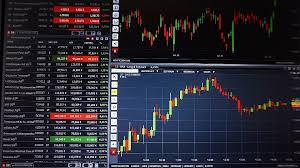
Forex trading, or foreign exchange trading, has gained immense popularity over the years as individuals and institutions seek to invest and derive profits from the exchange of currencies. With a daily trading volume exceeding $6 trillion, the Forex market is the largest and most liquid financial market globally. In this guide, we’ll delve into various aspects of forex trading, covering essential strategies, tips, and insights that can help you navigate this complex market successfully. If you’re looking for a reliable trading platform, consider trading forex Trading Broker ID, which offers various tools and resources for traders.
Understanding Forex Trading
Forex trading involves buying one currency while simultaneously selling another, and it takes place in currency pairs, such as EUR/USD or GBP/JPY. The goal of trading is to profit from changes in exchange rates between currencies. For instance, if you anticipate that the euro will strengthen against the dollar, you would buy the EUR/USD pair.
Key Terms in Forex Trading
Before diving deeper into trading strategies, it’s crucial to understand some basic terminology:
- Currency Pairs: Currencies are traded in pairs, with the first currency being the base currency and the second being the quote currency.
- Pips: A pip is the smallest price move in a currency pair. Most pairs are quoted to four decimal places, where a pip represents a movement of 0.0001.
- Leverage: Leverage allows traders to control larger positions with a smaller amount of capital, potentially increasing profits but also risks.
- Lot: A lot is a standardized unit of measurement for a trading transaction. A standard lot typically represents 100,000 units of the base currency.
Developing a Successful Trading Strategy
Having a solid trading strategy is essential for success in forex trading. Here are some popular strategies used by traders:
1. Day Trading
Day trading involves executing multiple trades within a single trading day, aiming to profit from short-term price movements. Day traders often use technical analysis, charts, and indicators to make quick decisions based on price trends.
2. Swing Trading
Swing trading focuses on capturing short- to medium-term market moves. Traders hold positions for several days or weeks, looking to take advantage of market “swings.” This strategy requires a good understanding of market trends and fundamental analysis.
3. Scalping
Scalping is a high-frequency trading strategy where traders make numerous small profits on minor price changes. Scalpers usually hold positions for seconds or minutes, requiring swift execution and tight spreads.
4. Position Trading
Position trading involves holding trades for a longer duration, from weeks to months. This strategy is aligned with a trader’s view of long-term market trends and is less concerned with short-term price fluctuations.
Risk Management in Forex Trading
Risk management is a critical component of any successful trading strategy. Here are some key practices to help mitigate risks:
- Use Stop Loss Orders: Setting a stop loss order limits potential losses on a trade by automatically closing the position when it reaches a predetermined loss level.
- Position Sizing: Determining the right size for your trades can prevent significant losses. A common rule is to risk only 1-2% of your trading capital on a single trade.
- Diversification: Spread your investments across different currency pairs to reduce the impact of poor-performing trades on your overall portfolio.
Understanding Market Analysis
To make informed trading decisions, traders rely on both technical and fundamental analysis:
Technical Analysis
Technical analysis involves studying historical price data and patterns on charts to predict future movements. Traders use various tools, including:
- Charts: Line, bar, and candlestick charts offer visual representations of price movements.
- Indicators: Tools like Moving Averages, RSI (Relative Strength Index), and MACD (Moving Average Convergence Divergence) help identify trends, momentum, and entry/exit points.
Fundamental Analysis
Fundamental analysis focuses on economic indicators, news releases, and geopolitical events that can affect currency values. Economic data, such as GDP growth, employment rates, and inflation, plays a significant role in assessing currency strength.
Choosing the Right Forex Broker
Selecting a trustworthy forex broker is vital for successful trading. Look for the following qualities:
- Regulation: Choose a broker regulated by reputable financial authorities to ensure your funds are secure.
- Trading Platforms: A user-friendly trading platform with advanced features can enhance your trading experience.
- Customer Support: Efficient customer service can help resolve issues quickly and efficiently.
The Psychology of Trading
The psychology behind trading is often overlooked but is critical to trading success. Emotions such as fear and greed can cloud judgment and lead to poor decision-making. Here are some tips to manage trading psychology:
- Maintain Discipline: Stick to your trading plan and avoid impulsive decisions based on emotions.
- Set Realistic Goals: Establish achievable profit targets and risk limits to prevent frustration.
- Practice Patience: Not all trades will be winners. It’s important to wait for the right opportunities and not force trades.
Conclusion
Forex trading offers exciting opportunities for profit but also comes with significant risks. By understanding the market’s intricacies and committing to a disciplined approach, you can improve your chances of success. Whether you choose to engage in day trading, swing trading, or long-term investing, ensure you have a solid strategy, a clear risk management plan, and the right mindset. Take advantage of the resources offered by platforms like Trading Broker ID to enhance your trading journey.